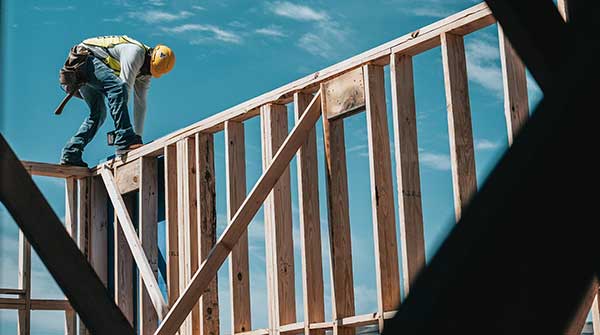Instead of providing housing that people need, Vancouver is churning out tiny, overpriced units that most residents can’t afford
 New decorations are blossoming in the city of Vancouver. They are the bright blue and yellow signs announcing potential, mainly residential, developments.
New decorations are blossoming in the city of Vancouver. They are the bright blue and yellow signs announcing potential, mainly residential, developments.
This is causing some concern because so many of these developments display pictures of soaring high-rises, even when they are located on quiet streets with low-rise buildings or houses that look like single-family homes, even though they may have more than one unit. On top of that, there are just so many of them. There is one on almost every block in areas like the Broadway corridor and East Vancouver.
Yes, Vancouver definitely needs more housing, so, at first glance, this might seem like a positive development. Look at the basic laws of supply and demand. There’s a high demand for housing in Vancouver, not just for the many homeless but also for those living in inadequate housing and those who want to move to Vancouver and have a place to call home.
If demand is to generate change in the real world, it must go beyond desire or even need. It must be effective demand which means that the potential customers must be willing and able to pay for what they want. At today’s prices, this is not the case for far too many people in Vancouver.
This is where supply comes in. Other things being equal, unmet demand increases supply and the additional supply lowers prices, bringing the market into balance. The government justifies proposing and often subsidizing these developments by arguing that increasing the housing supply is necessary. However, these developments would drastically change neighbourhoods, causing concern and frustration among residents.
Why would people oppose the creation of more housing when it’s so desperately needed? One reason is that many of these new developments will do little to provide affordable homes for those who need them most. According to the information on the blue and yellow signs, only 20 percent of the units in the planned towers will be affordable, leaving the majority of units out of reach for many residents.
You don’t need to be a mathematician to realize that this means 80 percent of the units will be market-rate housing. There’s nothing wrong with mixing housing for low-income residents with units for those who are better off. In fact, urban studies show that this creates strong, vibrant neighbourhoods. It also encourages the development of more affordable housing, as the higher-priced units can help offset the costs of the lower-priced ones.
Take, for example, the much-publicized proposed building at 2nd Avenue and Larch in Vancouver. While we don’t want to single out this particular development, there is a concern that it may be representative of many of the projects being proposed across the city.
The 20 percent affordable housing rule falls far short of meeting the needs of at least the bottom half of the population. This issue isn’t just about the small number of so-called affordable units being offered; it’s also about their size. For example, one-bedroom units are as small as 393 square feet, and two-bedrooms are only 840 square feet. Despite their size, these units would still rent for nearly $1,500 and $2,000 a month, requiring an annual income of $60,000 to $80,000 to meet the standard 30 percent of income spent on housing. This level of affordability is typically aimed at middle-income earners, leaving low-income individuals, such as many pensioners, out of the equation entirely.
And if we take a closer look, even the 80 percent of so-called market housing may not be viable. As mentioned, the units are quite small by most Canadian standards, making them less appealing or feasible for many potential residents.
An adequate, though not extravagant, one-bedroom apartment has typically been considered to be around 1,000 square feet. In comparison, these proposed two-bedroom units are just 840 square feet, which is smaller than what many people would expect for even a one-bedroom.
The market rent for these small units is staggering. A two-bedroom apartment, barely 840 square feet, could cost up to $4,300 a month, while a unit of less than 400 square feet might go for as much as $2,750. Based on the 30 percent rule for housing costs relative to income, renters would need to earn between $100,000 and $200,000 annually to afford these prices. How many people with incomes at that level would actually be willing to live in apartments of this size?
Increasing the supply of unaffordable and unwanted housing in Vancouver mainly benefits developers, who are subsidized with low-interest loans to build these projects. However, even developers could suffer if there isn’t enough demand for their overpriced, tiny market units.
If governments actually want to provide more affordable housing, they can start by making more land available at little or no cost and by carefully reviewing regulations to reduce building costs. They should also be paying closer attention to the concerns and feedback of their citizens.
Dr. Roslyn Kunin is a Troy Media columnist, public speaker and consulting economist.
For interview requests, click here.
The opinions expressed by our columnists and contributors are theirs alone and do not inherently or expressly reflect the views of our publication.
© Troy Media
Troy Media is an editorial content provider to media outlets and its own hosted community news outlets across Canada.

